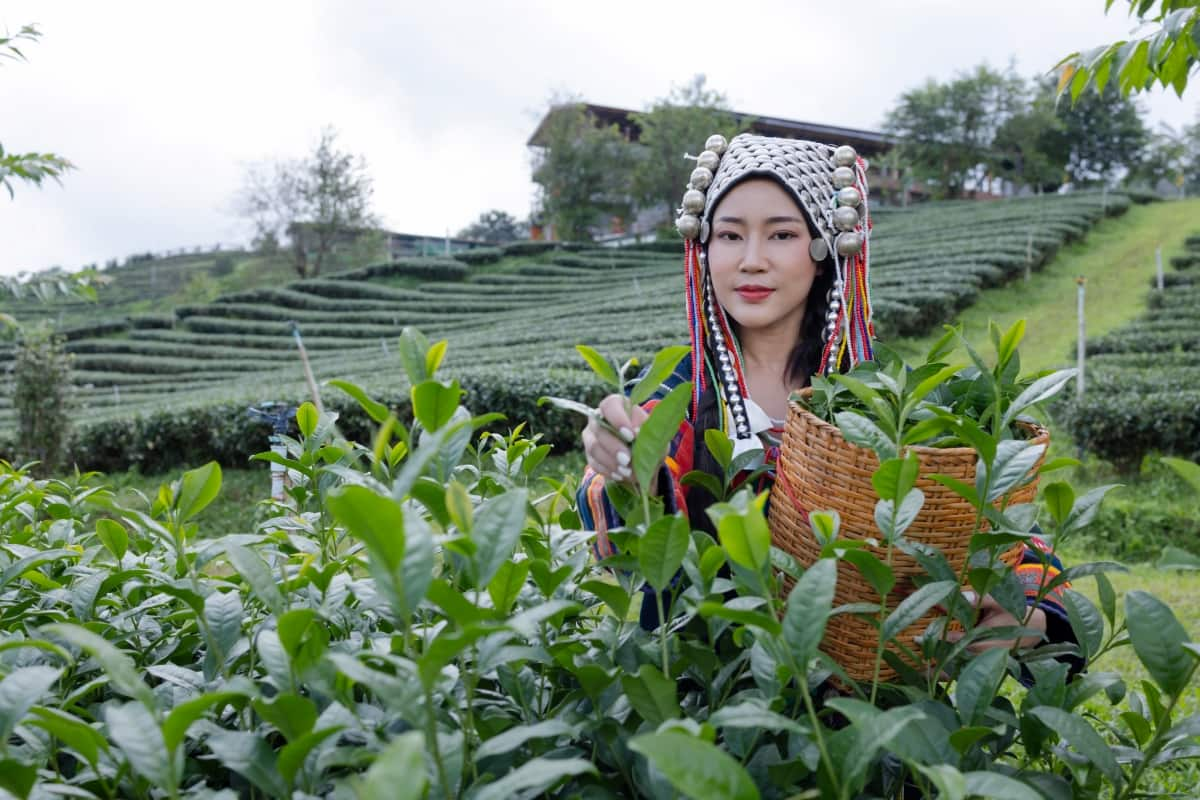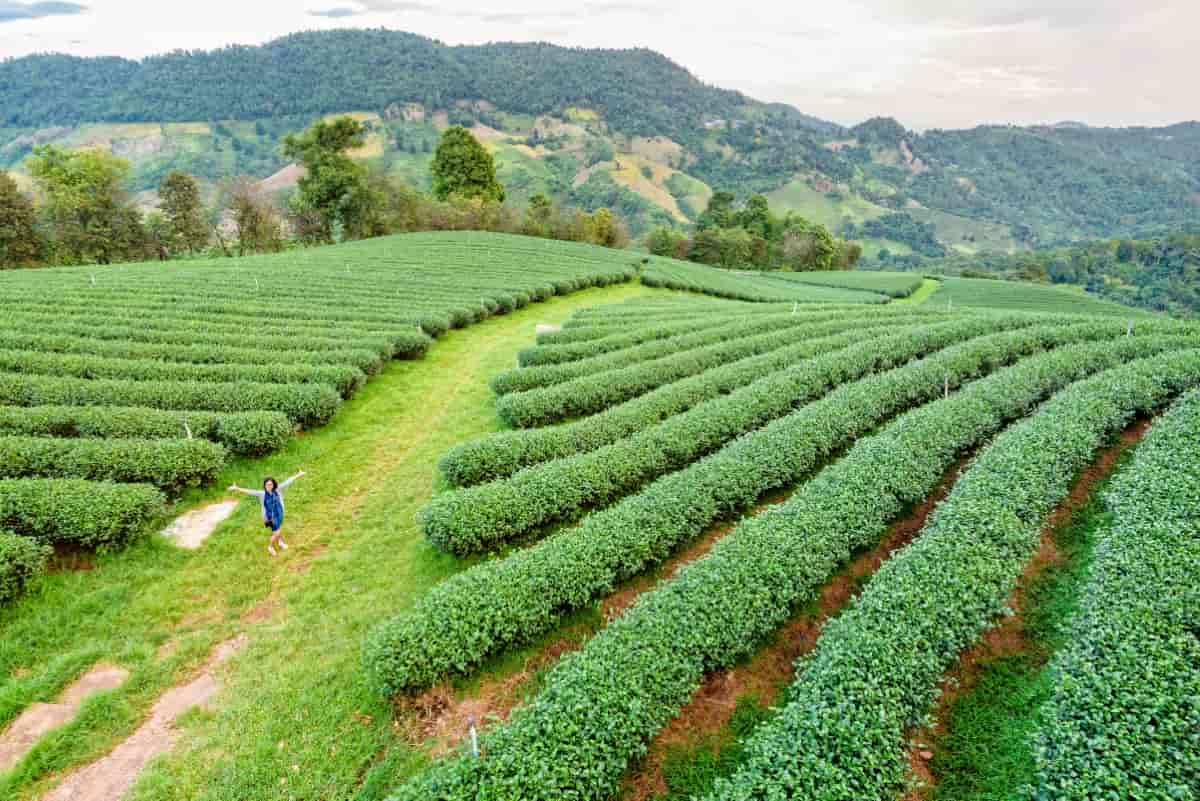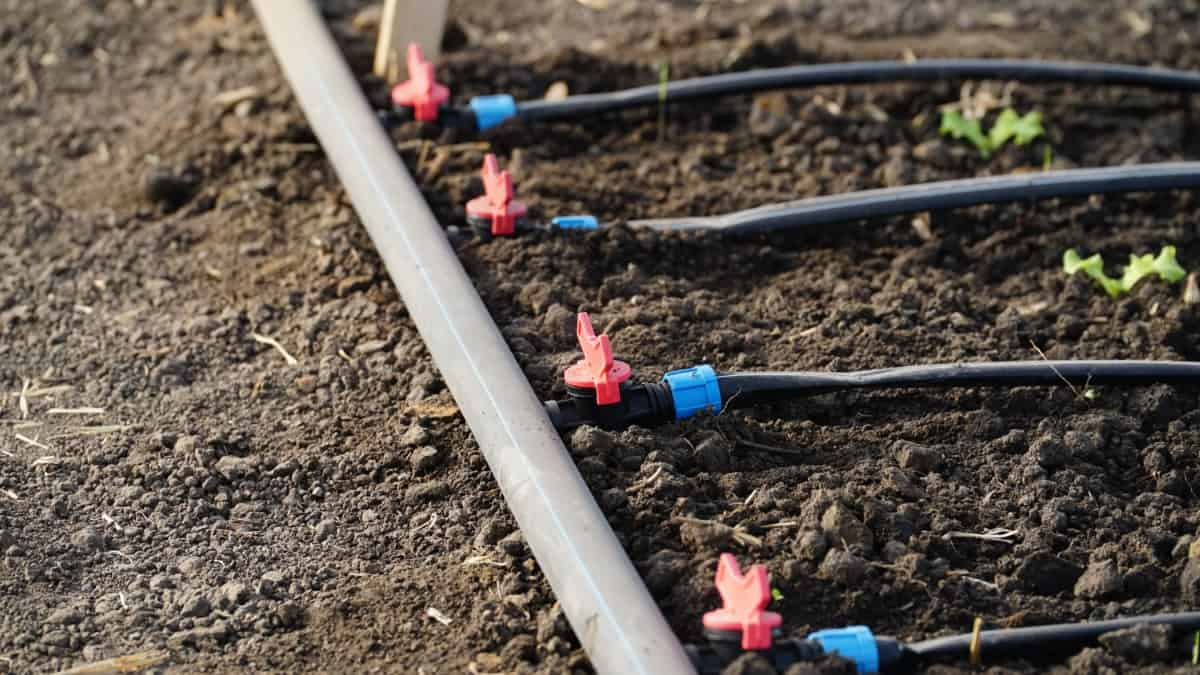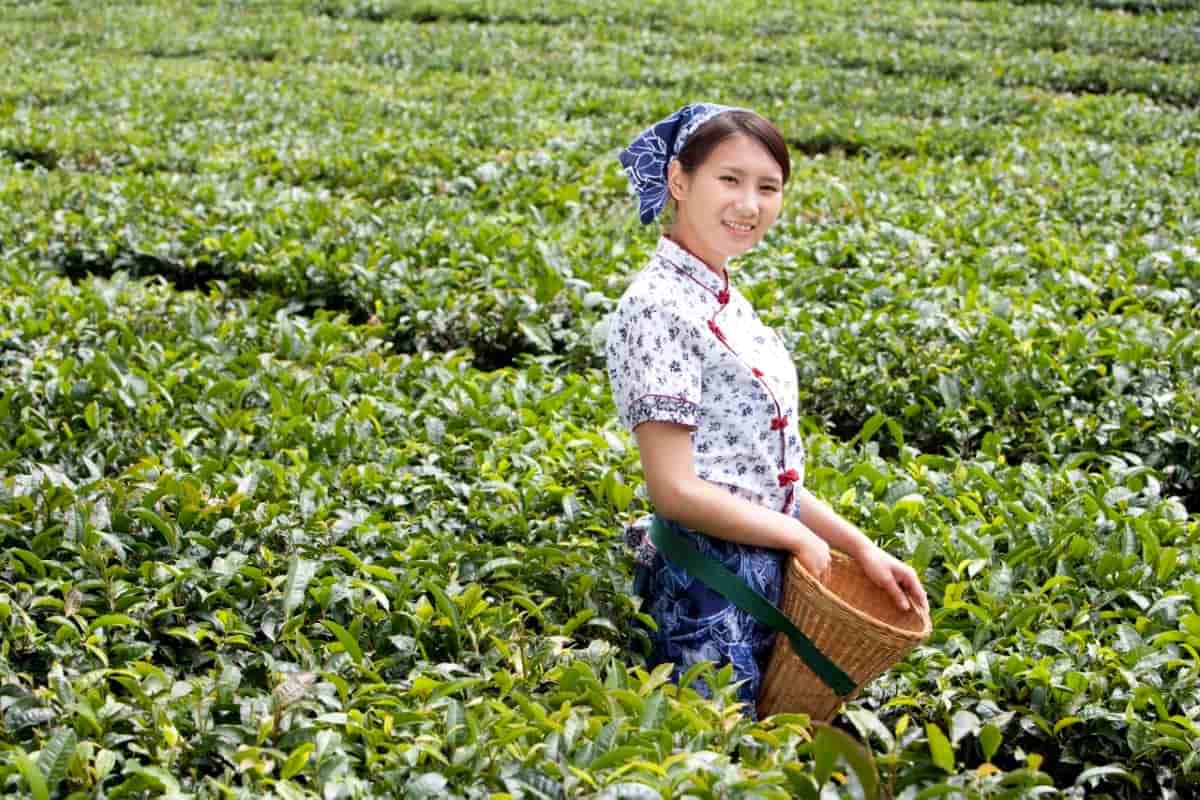Drip irrigation is a crucial component in modern agricultural practices, enhancing water efficiency and crop yield. The cost of drip irrigation for tea plantations varies based on factors like the topography of the land, water source, and acreage. On average, the cost per acre for drip irrigation in tea fields ranges from Rs. 1,50,000 to Rs. 1,80,000.

This includes expenses for drip lines, emitters, filters, pumps, and installation labor. Government subsidies play a pivotal role in offsetting these costs and promoting sustainable farming practices. Various state and central schemes offer financial assistance, covering a significant portion of the initial investment, thereby encouraging tea farmers to adopt drip irrigation technology.
Drip Irrigation Cost for Tea Plantation
Evaluate the Cost of Drip Lines and Emitters for Tea Fields
The cost breakdown of essential components like drip lines and emitters is integral to understanding the overall investment. Drip lines, which transport water from the source to plants, cost approximately Rs. 12,000 to Rs. 15,000 per acre. Emitters responsible for delivering water to individual plants add Rs. 10,000 to Rs. 15,000 per acre.
It’s crucial to note that the selection of high-quality materials ensures durability and efficiency, contributing to the long-term success of the drip irrigation system in tea plantations. Subsidies can significantly alleviate the financial burden associated with these components, making drip irrigation an economically viable and sustainable choice for tea farmers.
Analyze the Expense of Filters and Pressure Regulators in Drip Irrigation Systems
Filters and pressure regulators are essential components of drip irrigation systems, ensuring the efficient and uniform distribution of water to tea plants. The cost of filters typically ranges from Rs. 8,000 to Rs. 10,000 per acre, depending on the type and quality. High-quality filters prevent clogging, prolonging the life of the system and reducing maintenance costs.
Pressure regulators, vital for maintaining optimal water pressure, add Rs. 10,000 to Rs. 15,000 per acre. While these components contribute to the initial investment, their significance in preserving the longevity and effectiveness of the drip irrigation system justifies the expense.
Estimate the Cost of Automation and Control Systems in Drip Irrigation for Tea
Automation and control systems enhance the precision and efficiency of drip irrigation. The cost of these systems, including sensors, controllers, and monitoring devices, ranges from Rs. 20,000 to Rs. 25,000 per acre. Automation allows tea farmers to remotely manage irrigation schedules, monitor soil moisture levels, and optimize water usage. Although the upfront investment may seem significant, the long-term benefits in terms of water conservation, increased yield, and reduced operational costs make automation a strategic investment for tea plantations.
Assess the Price of Pumps and Pumping Stations for Drip Irrigation in Tea Farming
Pumps and pumping stations are critical components in drip irrigation, responsible for delivering water from the source to the fields. The cost of pumps for tea farming ranges from Rs. 20,000 to Rs. 25,000 per acre, depending on factors such as water source depth and required pumping capacity.
In case you missed it: Drip Irrigation Cost Per Acre in Orange Plantation: Exploring Installation Costs Along with Subsidy

Additionally, the construction of pumping stations, including infrastructure and installation, can add another Rs. 8,000 to Rs. 10,000 per acre. While these expenses contribute to the initial investment, the efficiency and reliability of the pumping system are integral to the success of drip irrigation in tea farming, ultimately leading to improved crop quality and yield.
Explore the Cost of Fertilizer and Nutrient Injection Systems in Drip Irrigation for Tea
Fertilizer and nutrient injection systems in drip irrigation for tea plantations play a crucial role in providing plants with essential nutrients for optimal growth and yield. The cost of these systems varies based on factors such as the type of fertilizers used, the complexity of the injection system, and the size of the tea plantation.
On average, the cost of integrating fertilizer and nutrient injection systems into a drip irrigation setup ranges from Rs. 18,000 to Rs. 20,000 per acre. The investment in these systems is justified by improved nutrient management, resulting in healthier tea plants and enhanced productivity.
Calculate the Labor and Installation Costs for Drip Irrigation in Tea Plantations
Labor and installation costs are significant components of the overall investment in drip irrigation for tea plantations. The installation process involves laying drip lines, setting up emitters, installing filters and pressure regulators, and integrating automation systems. Labor costs typically range from Rs. 7,000 to Rs. 10,000 per acre, depending on the complexity of the installation and local wage rates.
Additionally, the cost of materials and equipment for installation can amount to Rs. 3,000 to Rs. 5,000 per acre. Proper installation is vital for the efficiency and longevity of the drip irrigation system, making these upfront costs essential for long-term success.
Factor the Maintenance and Repair Expenses for Drip Irrigation Systems in Tea Farming
Maintenance and repair are ongoing considerations for drip irrigation systems in tea farming. Regular maintenance, including system checks, filter cleaning or replacement, and emitter inspection, is vital to prevent clogs and ensure optimal performance. On average, annual maintenance costs for a drip irrigation system in tea farming range from Rs. 8,000 to Rs. 10,000 per acre. In addition to routine maintenance, budgeting for unexpected repairs is essential. The cost of repairs can vary but typically ranges from Rs. 10,000 to Rs. 15,000 per acre annually.
In case you missed it: Drip Irrigation Cost for Pumpkin: Exploring Installation Costs Along with Subsidy Per Acre

Energy Costs Associated with Drip Irrigation in Tea Cultivation
The energy costs associated with drip irrigation in tea cultivation primarily stem from the operation of pumps used to transport water through the drip lines. The energy consumption is influenced by factors such as pump efficiency, water source distance, and elevation changes. On average, the energy costs for drip irrigation in tea farming range from Rs. 8,000 to Rs. 15,000 per acre annually. Investing in energy-efficient pumps and utilizing renewable energy sources, like solar power, can mitigate these costs, contributing to the sustainability of the irrigation system.
Table for Cost of Drip Irrigation Per Acre for Tea Plantation
| Item | Cost Range (Rs.) |
| Drip Lines & Emitters | 22,000 to 30,000 |
| Filters and Pressure Regulators | 18,000 to 25,000 |
| Automation and Control Systems | 20,000 to 25,000 |
| Pumps and Pumping Stations | 28,000 to 35,000 |
| Fertilizer and Nutrient Injection Systems | 18,000 to 20,000 |
| Labor and Installation Costs | 10,000 to 15,000 |
| Maintenance and Repair Expenses | 18,000 to 25,000 |
| Energy Costs | 8,000 to 15,000 |
Government Subsidy for Drip Irrigation in Tea Plantation
Government subsidies for drip irrigation in tea plantations are crucial in promoting sustainable agricultural practices. These financial incentives aim to offset the initial investment and operational costs, making water-efficient drip irrigation more accessible to farmers.
Under the PDMC (Per Drop More Crop) component in the PMKSY scheme, the Government of India provides financial assistance to the farmers to implement micro irrigation viz drip irrigation and sprinkler irrigation at the farm level. The subsidy will be 55% for the small and marginal farmers, whereas it will be 45% for the other farmers.
Compare the Overall Operational Costs of Drip Irrigation vs. Traditional Methods in Tea Farming
Drip irrigation and traditional methods represent two distinct approaches to water management in tea farming, each with its associated operational costs. Drip irrigation offers precise water delivery to individual plants, minimizing water wastage and optimizing resource use. While the initial investment in drip irrigation may be higher, the long-term operational costs are often lower due to improved water efficiency.
In case you missed it: Drip Irrigation Cost Per Acre for Plum Plantation: Exploring Installation Costs Along with Subsidy

Traditional methods, such as flood or furrow irrigation, involve broader water application, leading to higher water consumption, increased labor requirements, and potentially elevated energy costs. The comparison of overall operational costs involves assessing expenses related to water usage, labor, energy, and maintenance over an extended period.
Conclusion
In conclusion, the exploration of drip irrigation costs for tea plantations reveals a crucial balance between initial investments and long-term sustainability. While installation expenses vary, subsidies play a pivotal role in making this water-efficient technology financially feasible for tea farmers. The strategic adoption of drip irrigation not only enhances water efficiency but also aligns with agricultural modernization, ensuring the economic viability and environmental sustainability of tea cultivation in the long run.
- Feed Your Flock for Less: Top 10 Tips to Save on Chicken Feed
- Ultimate Guide to Ossabaw Island Hog: Breeding, Raising, Diet, and Care
- Hatching Answers: The Top 10 Reasons Your Chickens Aren’t Laying Eggs
- Eggs and Economics: Breaking Down the Cost of Raising Backyard Chickens
- Defend Your Greens: Proven Methods to Keep Iguanas Out of Your Garden
- Ultimate Guide to Cinnamon Queen Chicken: A Comprehensive Guide for Beginners
- Ultimate Guide to California Tan Chicken: Breeding, Raising, Diet, Egg-Production and Care
- Ultimate Guide to Marsh Daisy Chicken: Breeding, Raising, Diet, and Care
- 10 Types of Chicken Farming Businesses You Can Start for Profits